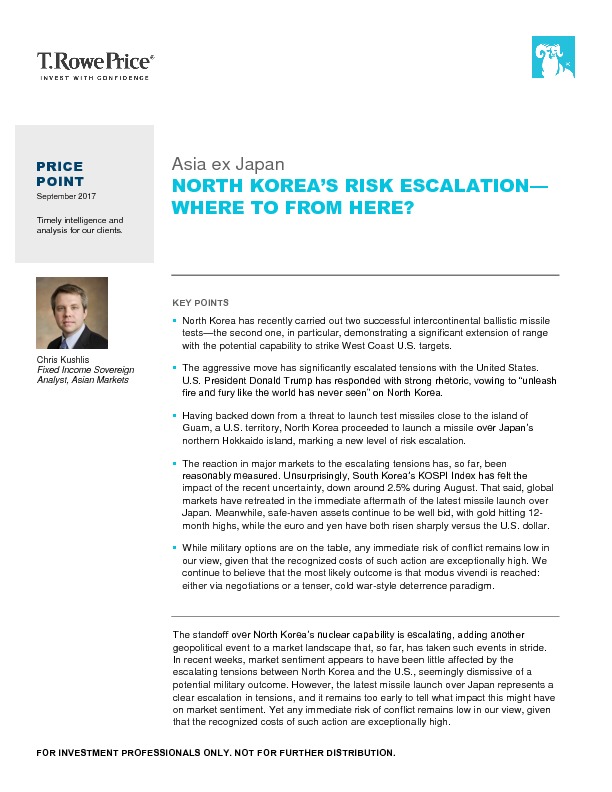

North Korea has recently carried out two successful intercontinental ballistic missile tests—the second one, in particular, demonstrating a significant extension of range with the potential capability to strike West Coast U.S. targets.
The aggressive move has significantly escalated tensions with the United States. U.S. President Donald Trump has responded with strong rhetoric, vowing to “unleash fire and fury like the world has never seen” on North Korea.
Having backed down from a threat to launch test missiles close to the island of Guam, a U.S. territory, North Korea proceeded to launch a missile over Japan’s northern Hokkaido island, marking a new level of risk escalation.
The reaction in major markets to the escalating tensions has, so far, been reasonably measured. Unsurprisingly, South Korea’s KOSPI Index has felt the impact of the recent uncertainty, down around 2.5% during August. That said, global markets have retreated in the immediate aftermath of the latest missile launch over Japan. Meanwhile, safe-haven assets continue to be well bid, with gold hitting 12- month highs, while the euro and yen have both risen sharply versus the U.S. dollar.
While military options are on the table, any immediate risk of conflict remains low in our view, given that the recognized costs of such action are exceptionally high. We continue to believe that the most likely outcome is that modus vivendi is reached: either via negotiations or a tenser, cold war-style deterrence paradigm.





